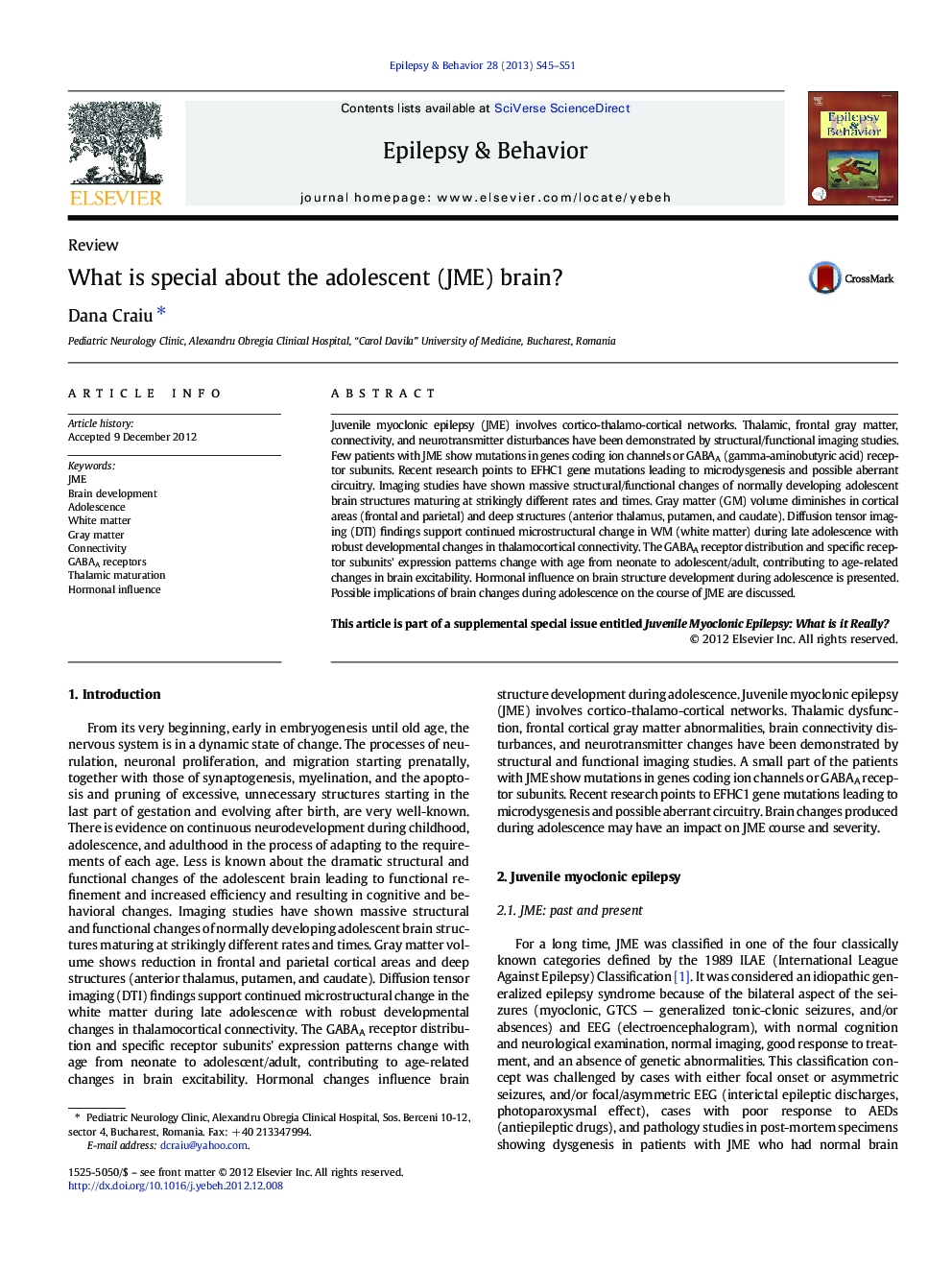| Article ID | Journal | Published Year | Pages | File Type |
|---|---|---|---|---|
| 3049738 | Epilepsy & Behavior | 2013 | 7 Pages |
Juvenile myoclonic epilepsy (JME) involves cortico-thalamo-cortical networks. Thalamic, frontal gray matter, connectivity, and neurotransmitter disturbances have been demonstrated by structural/functional imaging studies. Few patients with JME show mutations in genes coding ion channels or GABAA (gamma-aminobutyric acid) receptor subunits. Recent research points to EFHC1 gene mutations leading to microdysgenesis and possible aberrant circuitry. Imaging studies have shown massive structural/functional changes of normally developing adolescent brain structures maturing at strikingly different rates and times. Gray matter (GM) volume diminishes in cortical areas (frontal and parietal) and deep structures (anterior thalamus, putamen, and caudate). Diffusion tensor imaging (DTI) findings support continued microstructural change in WM (white matter) during late adolescence with robust developmental changes in thalamocortical connectivity. The GABAA receptor distribution and specific receptor subunits' expression patterns change with age from neonate to adolescent/adult, contributing to age-related changes in brain excitability. Hormonal influence on brain structure development during adolescence is presented. Possible implications of brain changes during adolescence on the course of JME are discussed.This article is part of a supplemental special issue entitled Juvenile Myoclonic Epilepsy: What is it Really?
► Adolescence – dramatic structural and functional neurodevelopment ► Non-linear changes, region-specific, gender-specific, different timing ► GM reduction (synaptic pruning, apoptosis, myelination) ► WM increase (myelination, increased axon caliber, glial proliferation), connectivity changes ► GABAergic system - increase efficiency, decrease energy consuming
